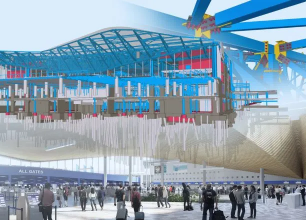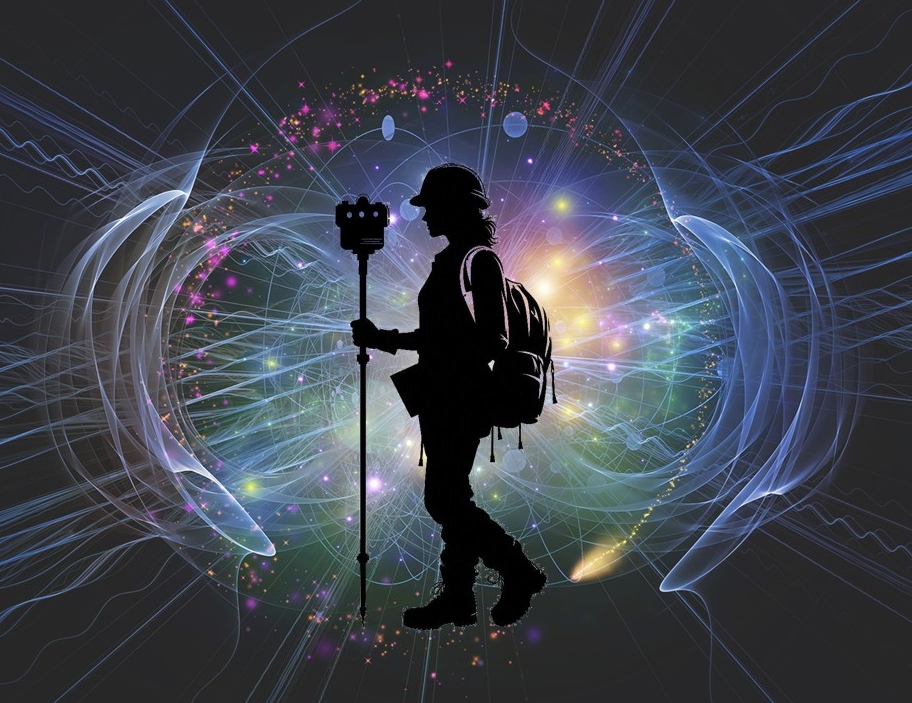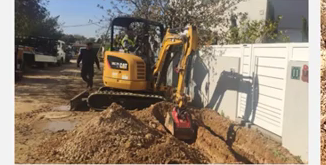
- AECOM Selected by TTC for Bloor-Yonge Station Project
- BIM and OPENBIM Capable of Projects Large and Small
- Impact of Digital Twins Impact on Building Lifecycle Explored by Universities and AECO
- Digital Twins and AI Dig Into Mining and Construction
The TTC (Toronto Transit Commission) has awarded a contract to AECOM, an infrastructure consulting firm, to be owner’s engineer for the Bloor-Yonge Capacity Improvements (BYCI) project.
AECOM will be advising in all project phases, detailed design, procurement, construction commissioning, handover, and close-out, as well as the delivery model implementation, BIM (Building Information Modelling), training, application, project specific output, cost and estimating, and support services.

Bloor-Yonge Station, constructed in 1953, is a busy and critical subway station in Toronto and in North America. The important improvements include a new two-lane passenger platform, expanding the platforms of Line 1, and improving safety, accessibility, entrances, exits, and concourse level.
BIM and OPENBIM Capable of Projects Large and Small
Though many companies believe BIM and OPEN BIM methodology is suitable only for large projects, small companies are finding OPEN BIM is helping them spend more time on work and less time on looking for information.
People need to be efficient when managing small companies so no time or money is wasted. Large companies need to be efficient so they stay competitive. Both types of companies need to use OPEN BIM to establish an even more effective workflow, as few companies can design successful projects in isolation. This only hinders project delivery.

There are four steps. Step one is to learn about OPEN BIM and the difference between OPEN BIM and Closed. The second step is to develop the proper mindset about OPEN BIM and its importance. Step three is to ask for specialist help, don’t be shy. The fourth step is to be willing to collaborate and share with others.
Remember, it’s not about which software to use, but to be shown how to use OPEN BIM to work together better.
https://blog.nemetschek.com/en/topics-and-insights/open-bim-getting-started
Impact of Digital Twins Impact on Building Lifecycle Explored by Universities and AECO
Four Canadian universities and AECO Innovation Lab are working together on a research project that will study challenges in the development, implementation and use of digital twins in the architecture, construction, engineering, and government sectors.
The project is called “AI-enabled Digital Twins for Automation of Regulatory Systems in the Built Environment.” Its goal is to create innovation and digital transformation, as well as study how the development approval process can be transformed by digital tools and technology. The study will also examine how BIM and Digital Twins can be used by regulatory agencies for improved and informed decision-making.

The study will bring everyone up to the same speed as the AEC (architecture, engineering and construction) and the rest of the world. Canada needs to catch up. There will be a coordination of government and industry experts while researching the technical challenges and economic, environmental, and social challenges addressed by digital twins.
Those involved are Carleton University, Toronto Metropolitan University (TMU), University of British Columbia (UBC), and École de technologie supérieure (ETS) Montreal. The experts include Érik Poirier from ETS Montréal, Sheryl Staub-French from UBC, David Amborski from TMU, and Stephen Fai from Carleton University Azrieli School of Architecture and Urbanism.
Digital Twins and AI Dig Into Mining and Construction
Skycatch, a San Fransico based startup that has helped companies mine minerals and data, is now digging into the world of digital twins.
Skycatch is focusing on the mining and construction industry with NVIDIA Omniverse platform. The platform is being used to build and connect custom 3D pipelines. NVIDIA Inception is a free, global program. It encourages startups with cutting-edge technologies. Skycatch is a Premier Partner.
SkyVerse, part of Skycatch’s vision AI platform, combines custom Omniverse extensions and computer vision software. This allows users to use geospatial data to creat virtual mines and other types of sites.

SkyVerse can simulate variables, such as weather and broken machinery, up to five years in the future, as well as learning from situations up to five years in the past. Data is collected from drones, LIDAR, and sensors, then used to create 2D images. These images are then used to create 3D meshes and are converted to USD (Universal Scene Description) framework. This is then brought to Omniverse Enterprise for digital twin creation.
Skycatch’s fully automated technologies have been used to to gather aerial data across thousands of sites at top mining companies. Skycatch is working with one of Canada’s leading mining companies, Teck Resources is a leading Canadian mining company, working with Skycatch, and uses Omniverse-based digital twins.
Skycatch intends to boost mining sustainability as well, making sure mines are operating correctly and environments are taken care of. With SkyVerse’s digital twins and AI, mining will become more efficient and safer.
https://blogs.nvidia.com/blog/2022/11/03/skycatch-vision-ai-digital-twins/




Be the first to comment